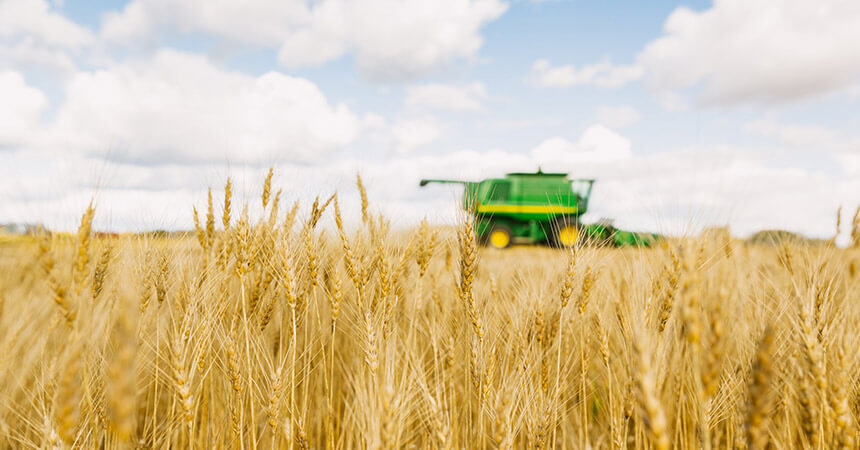Building Economic Value in Winter Wheat Through Improved Hard Red and Soft White Genetics for Eastern Canada

Written by: Michelle Boulton
When Gavin Humphreys assumed his position as the senior research scientist (winter wheat improvement) with the Agriculture and Agri-Food Canada (AAFC) Ottawa Research and Development Centre in 2014, his first order of business was rebuilding the program. He wanted to build a breeding pipeline, develop new germplasm, and produce new varieties of hard red winter wheat and (to a much lesser extent) soft white winter wheat adapted to Eastern Canada.
While “hard red winter wheat is a higher-value commodity in eastern Canada than soft red winter, which accounts for 80 to 85 percent of the acreage,” Humphreys says, “the lion’s share of the breeding effort goes into soft red winter wheat. If we can provide better varieties of hard red winter wheat, hopefully we can increase the market share of these varieties.”
“One of the advantages of winter wheat is 25 to 30 percent higher yield than spring wheat,” says Humphreys. “If we could get that advantage into more acreage, we could increase crop production by 25 to 30% using the same arable area. And that’s a big positive, not only for farmers but also for the productivity of agriculture in Canada.”
He’s been running two breeding pipelines. One is a doubled haploid pipeline, “which produces material that’s highly inbred in the laboratory in about a year and a half, when it would normally take five or six years to get to that point,” he explains. The other is a germplasm-based system in the field using a more traditional modified bulk breeding process, with plantings every fall and selection the following summer.
A new line (Ug9-26-32) made its way through the pipeline and was supported for registration a couple of years ago, but Humphreys says it didn’t get commercialized. “That was quite exciting for us because it was one of the first hard red winter wheats to get through that process, and the first one in about 15 years that the Ottawa program got to a point where it could be registered.”
The new line had very good end-use quality and it had moderate fusarium head blight resistance, but it was about 2% lower yielding than the check. “In Ontario, grain yield trumps everything,” he says. “If you don’t have yield, you’ll have some difficulty getting your lines supported and finding commercial partners.”
Humphreys is quite enthusiastic about some of the material he’s currently moving from the breeding program into the registration process. “The previous breeder at AAFC-Ottawa focussed on soft wheat, so I started from nothing, really. So, it’s going to take another year or so to get more material into the registration process,” he says. “We have some very exciting material in the first and second year of testing in Ontario and the Maritimes. So, we should be able to offer a variety to producers sometime in the next couple of years.”
Humphreys is trying to address two major challenges. One is winter hardiness. “Having superior resistance to winter stresses is absolutely critical, not only to retain the winter wheat acreage we have now, but, ideally, to expand the acreage,” he says.
The other is Fusarium head blight (FHB). He asserts that, “FHB has existed for a long time, and some will argue that we’ll never make progress on it, but I don’t believe that’s true. I think we know a lot more now than we did 10 or 20 years ago when the disease first started to become a real problem.”
Humphreys says improving FHB resistance will not only add to a farmer’s arsenal of protection against FHB damage, it will also minimize fungicide usage and the greenhouse gas emissions associated with the production, distribution, and application of fungicides.
“Coupled with higher yields, higher quality grain with less FHB damage will also give producers more value per weight for the wheat they’re producing,” he says.
Although Humphreys has been in his position for nine years, he still feels like he’s “kind of new to the system.” Despite that, he was very pleased by how quickly he was able to build collaborative relationships through the Canadian National Wheat Cluster. “Through the last round of cluster funding, I’ve seen tremendous growth in my capacity to work with others, offer plot exchanges, exchange germplasm, build on ideas that strengthen my breeding program, and hopefully also strengthen other breeding programs,” he concludes.
This Wheat Cluster project received funding from the Canadian Field Crop Research Alliance.